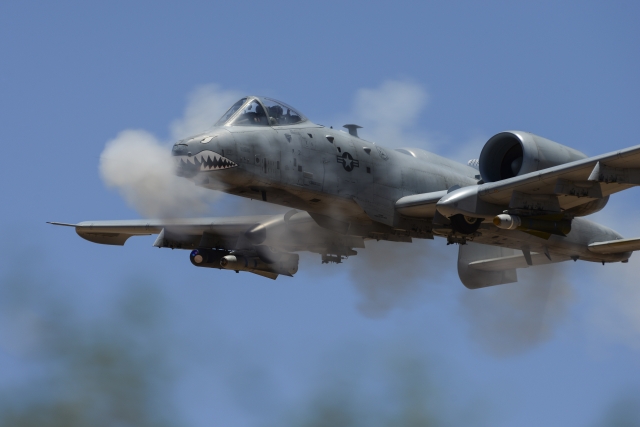Divesting of.... What the USAF must adhere to according to the FY22 NDAA.
As expected and despite being in the preparatory phase, there are no surprises for the USAF during the upcoming Fiscal Year 2022 National Defense Authorisation Act (NDAA).
That said, there is clearly one big winner. It looks like the USAF charm offensive for the A-10C Thunderbolt II is paying off. Earlier Scramble wrote about the USAF charm offensive with its Thunderbolt II and every Warthog counts for now.
On 7 December 2021, the House Committee on Armed Services, which looks after the annual NDAA, stated that a prudent modernisation of the A-10C fleet will provide the USAF a cost and mission effective Close Air Support (CAS) capacity and capability that will meet joint force requirements. Also, the committee believes that wing replacement for the planned fleet is a critical element of the fleet's sustainment and should be a high priority for the USAF. As such, the Secretary of the Air Force has to provide a briefing, regarding the planned timeline for completion of the re-winging of all planned aircraft in the A-10 fleet, to the House Committee on Armed Services no later than 31 January 2022.
Aside from the Thunderbolt II, some of which, because of low airframe hours, may be retiring in 2022, the USAF will be allowed to withdraw any aircraft and helicopters it has proposed to divest in its FY22 budget request. It is now expected that some 170 aircraft and helicopters will be allowed to retire in FY22.
On the nomination to be retired are: 48 F-15C/D Eagles, 47 F-16C/D Fighting Falcons, 4 E-8 Joint Surveillance Target Attack Radar System (JSTARS) aircraft and 20 RQ-4 Global Hawk Block 30 long-endurance Unmanned Aircraft Systems (UAS). Also nominated are 18 KC-135R/T Stratotankers, 14 KC-10A Extenders and 13 C-130H legacy Hercules transport aircraft.
Not explicitely named in the FY22 NDAA, but given that more USAF HH-60G Pave Hawk helicopters have been sent to the 309th Aerospace Maintenance and Regeneration Group (AMARG) in recent months, it is expected that more will follow in 2022.
Credit photo: USAF


